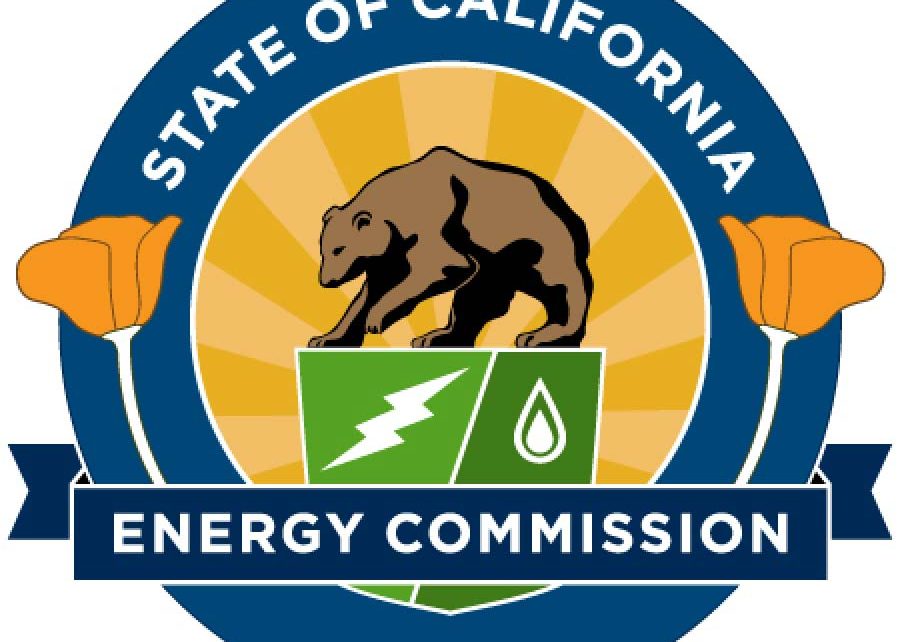
California Energy Commission (Photo: energy.ca.gov)
California Energy Commission Begins Certifying $1 Billion Energy Storage Facility in Kern County
If approved, the Gem Energy Storage Facility would be one of the largest storage facilities in the world, one of many in the County
By Evan Symon, July 14, 2022 4:48 pm
California Energy Commission (CEC) officials announced on Wednesday that they will begin to certify an energy storage facility development in Kern County that would help California continue to transition more into renewable energy use and severely reduce greenhouse gases.
According to the CEC and Hydrostor, the Canadian company looking to build it, the facility would ultimately be able to store up to 500 megawatts of energy through compressed air systems, and would be used to help the electrical system at peak times when more energy is needed. The facility, to be named the Gem Energy Storage Facility, would also connect up with the Southern California Edison power system and would power up to 400,000 homes in Southern California when needed. The total cost of the facility comes to $975 million, would be operational by 2026, and would bring 30 to 40 jobs to the town of Rosamond, as well as 700 temporary construction jobs.
In addition, the Gem facility would start off with a 61% efficiency, meaning that 39% of all energy brought in would be lost for consumer use. However, extra energy is already lost as is, and the 60% figure is expected to move up as the facility continues. Once complete, Gem will be one of the largest energy storage facilities in the world.
The proposed Gem facility, one of many currently being planned for Kern County, has been slowly moving forward through approvals over the last few years, with the CEC certification one of the last big hurdles for the project. Once certified, it will be made into a report and will head to public meetings before final review being slated for 2023 if all proves favorable.
The Gem facility, as well as many others being planned, would help meet the growing energy demand in California. As fossil fuel power plants continue to close in California and the state’s last nuclear plant is fighting to stay alive, the energy need is growing with only renewable sources such as solar and wind being there as some of the new allowable sources. Due to wind and solar not being able to operate 24/7 due to nighttime, cloudy days, and low wind days, a growing need has been shown for energy storage units to help fill peak time and low production gaps to avoid blackouts and brownouts.
A growing energy storage need in California
An energy crunch, caused in large part by Governor Gavin Newsom’s order to stop the sale of new gas powered cars by 2035 and to have 100% carbon free energy in California by 2045, is expected to be growing in the next several decades and is also bringing a need for these facilities.
“Gem’s quick-starting, flexible and dispatchable long-duration energy supply will have the ability to ramp-up and down through a wide range of electrical output,” said Hydrostor in a statement. “There are a number of advantages compressed air has over pumped storage. We use 10% less water than pumped storage and take up less land. The facility in Kern County will be 100 acres compared to the thousands of acres needed for pumped storage facilities.”
“This will be a big project and will cost $1 billion to build. We are excited to work with the community and we are excited about the progress made today.”
However, while being championed by the company, California, and those in favor of renewable energy, many have noted that the plan is far from perfect.
“There’s a lot of issues with the Gem storage facility, as well as others that are going to be popping up across California,” explained energy use and reduction advisor Aaron Hopper to the Globe on Thursday. “Right now, look at Texas. They are barely hanging on due to their grid starting to strain from all of this energy usage. Everyone having on their AC has consequences. And the state there is asking for everyone to reduce energy usage and now have to go into unprecedented emergency actions to avoid any blackouts. The state failed them during a cold snap last year that killed hundreds due to the heat going off. Now it looks like it might happen again, but this time with above 100 degree heat.”
“California has managed to avoid that, but as any resident in the state knows, brownouts still do happen. And that’s not even getting into planned power shutoffs PG&E and others use to help stop wildfires during windy days.”
“California is tempting fate by switching over now despite not looking to be ready. Closing the nuclear plant would be devastating as California needs that station to help transition between fossil fuel plants and clean energy plants. Energy storage is also a big part of it, but they are at very poor levels of energy storage retention. 61% isn’t bad, but it isn’t good either.
“And there are growing pains. California’s population is shifting all the time. The energy storage plants in Kern County make sense due to the high SoCal population, but other areas will need storage soon that the state isn’t looking at.”
“Bottomline? Energy storage is very much needed, but the state needs to slow down on how fast they are transitioning over to give everyone the chance to catch up, including the technology at the storage stations so that we aren’t storing les that two-thirds that go in there. We need to avoid how Texas keeps screwing up.”
With the Gem facility panned for a 2026 opening, Kern County, especially around Rosamond, is expected to be one of the nerve centers for energy storage in the state.
- Bill to Require Law Enforcement Disclosure if AI Was Used To Help Write Reports - August 7, 2025
- Gov. Newsom Files FOIA Request To ‘Expose True Cost’ Of L.A. Federal Troop Deployment for Anti-ICE Riots - August 6, 2025
- California Redistricting: How Newsom’s Plan Will Demolish Hard Fought GOP Gains - August 6, 2025








I’m a little more than shocked here, I expect better from the Globe and even Mr. Symon. These storage facilities have been done in Australia and fail miserable as far as the Big Batteries go and the power loss is a lot. The bigger disappointment is it seems the Globe is now on the C02/Climate Change bandwagon. In a fair column both sides and known results would be included. California is killing it’s self, is very far along the path to becoming a Park with residents for the Wealth and those who serve them. California’s Green Quest is suicide, look to Sir Lanka and Guiana, both forced into the Green New Deal and now collapsed and energy poor. Someone in California should be voicing the facts of these things. We proceed at our own peril.
“compressed air systems”. No safety issue here, especially after a decade or so.
“Bottomline? Energy storage is very much needed, but the state needs to slow down on how fast they are transitioning over to give everyone the chance to catch up, including the technology at the storage stations so that we aren’t storing less that two-thirds that go in there. We need to avoid how Texas keeps screwing up.”
^^^ All you need to read right here…. but Newsom will likely be after his Presidential aspirations by the time this fluster-cluck is scheduled to go online, so it’ll be someone else’s problem to figure out…
Anyone else noticed that Governor Mandate is really good at making rules & regulations that go into effect LONG after his dumbassed hide has left the scene, just like Governor Moonbeam before him???
California is ruled over by a series of dipwads…..
Unlike claimed by the Hydrostor developer, pumped storage projects don’t require “thousands of acres”. Well-chosen, high-head sites of similar capacity to GEM have small footprints. For example, one of many pumped storage projects proposed today, with a similar size (500 MW) will have a footprint of about 80 acres (both reservoirs). Its efficiency will be 75-80% (compared to the Hydrostor 60%). And it will have a probable lifespan double that expected of Hydrostor (very few pumped storage projects have ever been retired over the 100 year history of the technology). That said, diversity in storage technologies is good, and I hope that Hydrostor can go from its demonstration scale projects (5 or 10 MW so far) up to the scale proposed here.